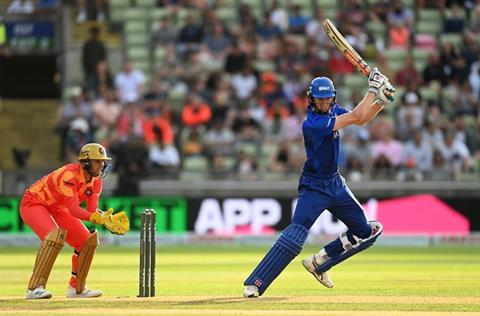Contented executive creative director Paul Reid reveals the thought process behind the cricket competition

The game of cricket, played in this country for more than four centuries and now one of the defining features of our sporting summer, is undergoing a transformation. The traditional game of five-day tests between counties or countries, accompanied by a soundtrack of polite applause as a batsman returns from his innings, and the odd cheer for a particularly unorthodox six, is now only one part of the game.
Five years ago the ECB launched The Hundred, a new, pacier format which was intended to breathe fresh life into cricket, introducing new audiences to a sport whose growth was at risk of stalling.
The ECB, who had previously devised the T20 format only to see markets overseas embrace it with more gusto than British fans, approached Contented to create and produce content for their brand new social media channels, with the main objectives being threefold: to appeal to sporty families with young children, to attract female sports fans and to reach the diverse range of communities who have a strong cultural affinity to cricket.
Anyone who’s seen a Hundred game will not struggle to spot the differences with traditional cricket. With colourful kits, bright lights, DJs and fireworks, every match is an attention-grabber, while the simplified rules - simply the most runs scored off 100 balls - makes it far more accessible for new audiences.
Doubleheaders at the country’s biggest stadiums see the women’s matches kicking off mid-afternoon followed immediately by the men’s matches which run into the evening, catching the post-work socialising, groups of friends looking for a fun afternoon or evening out, and removing any chance of younger fans getting bored.
Hype, Heroes and Home
When we first started fleshing out the idea of how to market the series we centred the overarching strategy around the three Hs - hype, heroes and home. Firstly, we wanted to get as much excitement and hype around the concept as possible and create a real sense of FOMO for those not attending; then it was about creating heroes by selecting the best participating cricketers and really build out their profiles - specifically creating equal airtime for the men and the women; and finally we wanted to drive home allegiances in order to tap into that tribal energy that is behind so much sports fandom. The Hundred is about teams from different parts of the UK - be it Manchester, London, Birmingham or Leeds - playing each other, so pinning an element of our marketing strategy to geography was key.
And then it was about delivering the content that would bring in those target audiences. When it all started back in 2020 TikTok was in its relative infancy but a strong presence on Instagram and YouTube ensured plenty of digital noise, made easier by the fact that England Cricket trails only the England football team in size of social media following.
Today we produce a plethora of content around the series, from behind-the-scenes at The Draft, when all the players who haven’t been retained by their teams are bid for at an auction-style event, to Squad Games, the series that pitches teams against each other and is aired in the run up to The Hundred’s summer launch. And once the tournament is live the content output ramps up yet again with realms of bite-sized live action and behind-the-scenes content coming out every day.
And, of course, brands have an opportunity to be part of this, with various partners producing bespoke content that gets them one step closer to the passion, emotion and positivity that live sport offers.
The tournament has proved a hit for the ECB, with 580,000 tickets sold last year, 41% to families, 30% to female fans and 23% to under 16s, alongside 710m social video views, 70m engagements and 645,000 new followers across social media.
Meanwhile the 2024 season sees the launch of Every Ball Counts, the ECB’s docuseries that follows the teams and players. Originally made for The Hundred’s YouTube channel, the series has now also been picked up by Sky Sports, cementing the status of this type of show among sports fans.
We’ve certainly had our detractors, but we believe cricket must continue to evolve if it is to find new audiences. The introduction of one day internationals in the 1970s was the first nod to versatility, followed in 2003 by the unveiling of the T20 format. In years to come I believe we will look back on The Hundred as another major turning point for cricket. By getting younger people engaged we are all playing a part in future-proofing this incredible sport.

Paul Reid is executive creative director at Contented








No comments yet